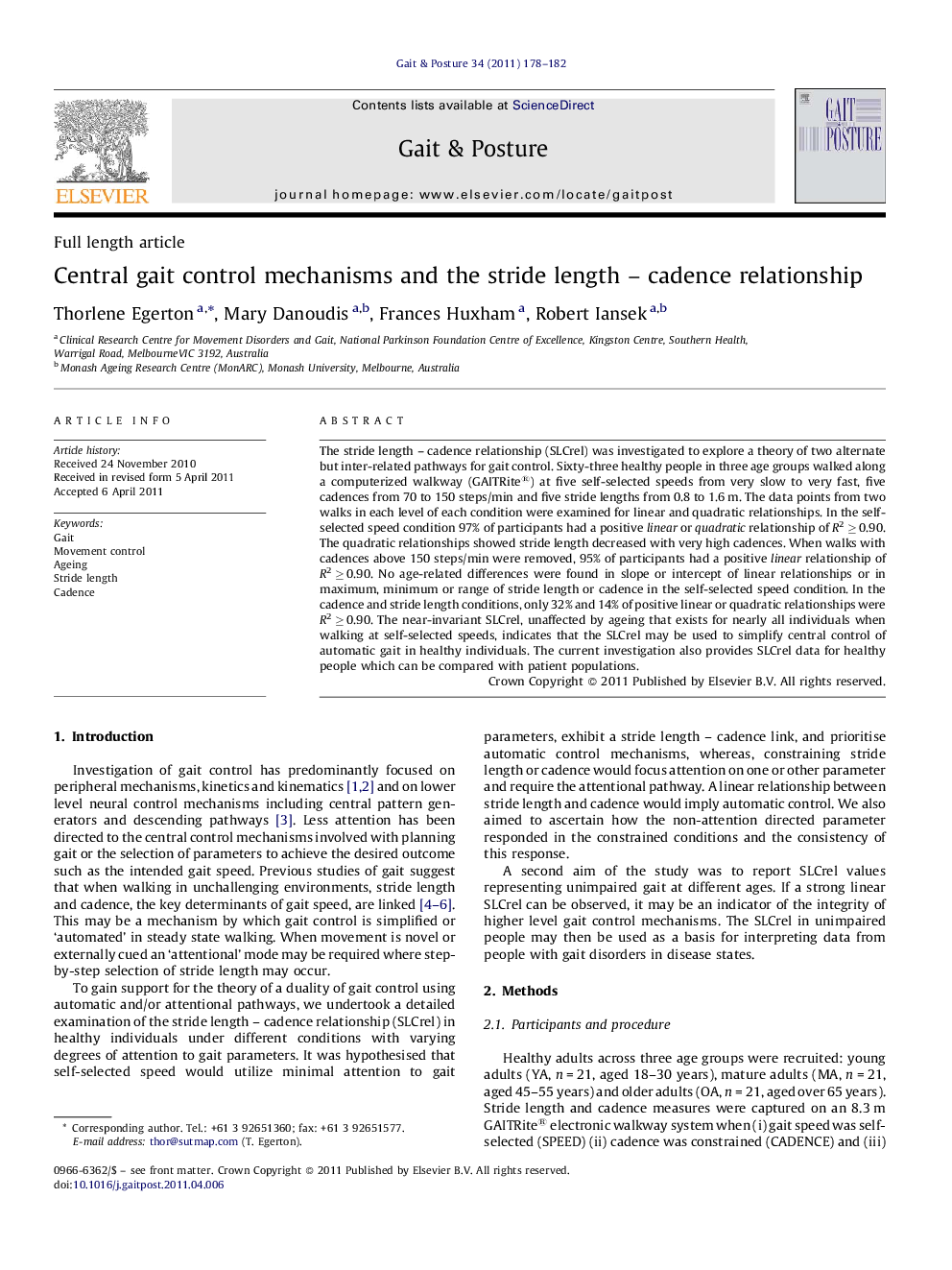| Article ID | Journal | Published Year | Pages | File Type |
|---|---|---|---|---|
| 4056889 | Gait & Posture | 2011 | 5 Pages |
The stride length – cadence relationship (SLCrel) was investigated to explore a theory of two alternate but inter-related pathways for gait control. Sixty-three healthy people in three age groups walked along a computerized walkway (GAITRite®) at five self-selected speeds from very slow to very fast, five cadences from 70 to 150 steps/min and five stride lengths from 0.8 to 1.6 m. The data points from two walks in each level of each condition were examined for linear and quadratic relationships. In the self-selected speed condition 97% of participants had a positive linear or quadratic relationship of R2 ≥ 0.90. The quadratic relationships showed stride length decreased with very high cadences. When walks with cadences above 150 steps/min were removed, 95% of participants had a positive linear relationship of R2 ≥ 0.90. No age-related differences were found in slope or intercept of linear relationships or in maximum, minimum or range of stride length or cadence in the self-selected speed condition. In the cadence and stride length conditions, only 32% and 14% of positive linear or quadratic relationships were R2 ≥ 0.90. The near-invariant SLCrel, unaffected by ageing that exists for nearly all individuals when walking at self-selected speeds, indicates that the SLCrel may be used to simplify central control of automatic gait in healthy individuals. The current investigation also provides SLCrel data for healthy people which can be compared with patient populations.
